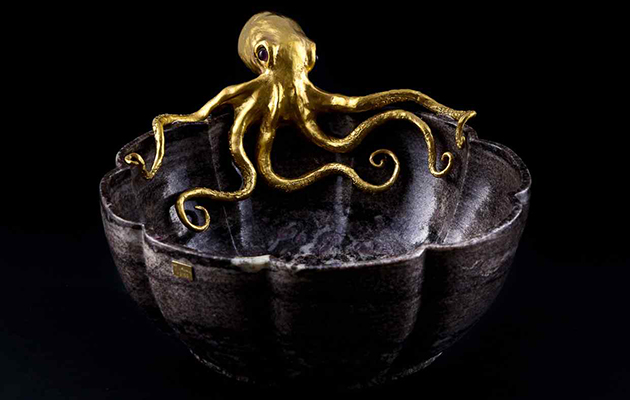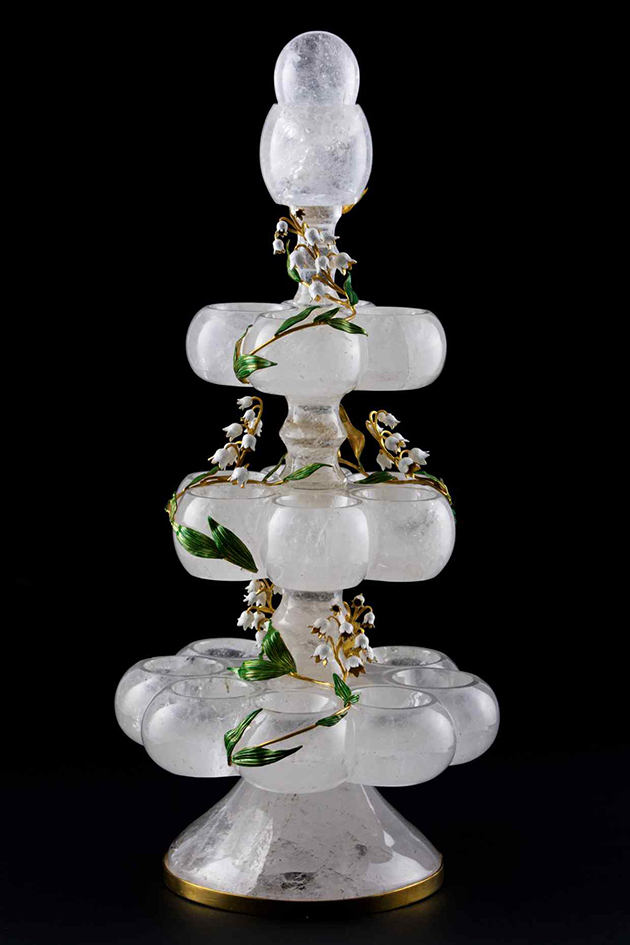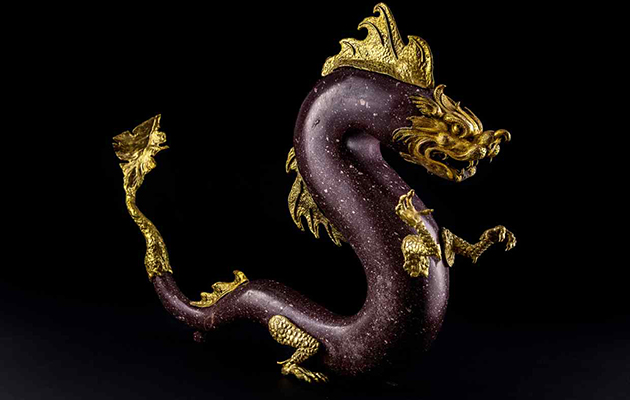The princess and designer Ira von Fürstenberg has created a line of objets d’art that are part-bestiary, part-kunstkammer, writes Joe Lloyd
The Princess Ira von Fürstenberg has lived many lives. She has been a socialite in Europe’s fashion sets. In the 1960s and 1970s, she starred in a string of films, from historical dramas to giallo. She worked on perfume for Valentino, and has helmed public relations for a dealer of Russian and Nordic art. And, for the past two decades, she has been a designer, producing a profusion of items that revive and revivifies the long European tradition of objet d’art, using materials – rock crystal, malachite, coral, jade – that call back across centuries of production.
Fürstenberg’s practice began when she helped a friend to create bespoke gifts for party guests. She now produces around 120 objects a year, and has ambitions to open a shop in London. This summer, over 80 were presented at Venice’s Museo Correr, a palatial Napoleonic-era residence occupying the western end of the Piazza San Marco. Here, in a pair of former imperial apartments that have never before been used for an exhibition, Fürstenberg’s objects have been placed on glowing pyramidal pedestals, designed by the opera director and set designer Pier Luigi Pizzi.

Though surrounded by intricately ornate chandeliers and mirrors, Fürstenberg’s objects achieve a presence of their own. In the first room, we encounter a tiered arrangement of works made with porphyry, a smooth aubergine-hued stone sourced in Egypt and associated for millennia with wealth and power. It’s part-bestiary, part-kunstkammer. A sinister stylised octopus perches on the side of a shell-shaped bowl, while a salamander crawls up a vase.
There are Chinese dragons, with heads, manes and tales gilded in bronze; the effect is less China than chinoiserie, drawing on the history of Western interpretations of the East. Bathed in white light by Pizzi’s installation, the bronze fringes gleam as if gold. Viewing the objects as a whole, it can feel like we have entered a lavish tomb: especially given the presence of porphyry skull, wearing a laurel and resting upon a book, like a tangible version of a 17th century vanitas painting.

Fürstenberg’s second assemblage was as pearlescent as the first was penumbral. Some of the same motives, such as gilt brass serpents, reoccur, but there the presiding materials are rock crystal and rose quartz. There is a crucifix tied with a gilded band, and a quartet of column-like vases that are the closest Fürstenberg’s work veers to the abstraction of modern design. Not unexpectedly, given Fürstenberg’s aristocratic lineage, these items have the grandiosity of the palace. There are some which you wouldn’t be surprised to find a grand ducal collection, of the sort which permeated Venice.

By contemporary orthodoxies, it might seem odd to label Fürstenberg’s work design. Ornamental, singular, full of figurative detail: they stand a far cry from the Salone. She does not fabricate them herself, but rather commissions them out to artisans in Italy and the Philippines. But object design in its current form – industrially-produced, functionalist, aesthetically inclined to minimalism – is only an iota of the compendious history of applied art. The path Fürstenberg follows may seem have been overtaken by the modern, but it persists, running parallel to the contemporary design world. And – especially when presented with the humour and eccentricity of Fürstenberg – it should not dismissed.

















